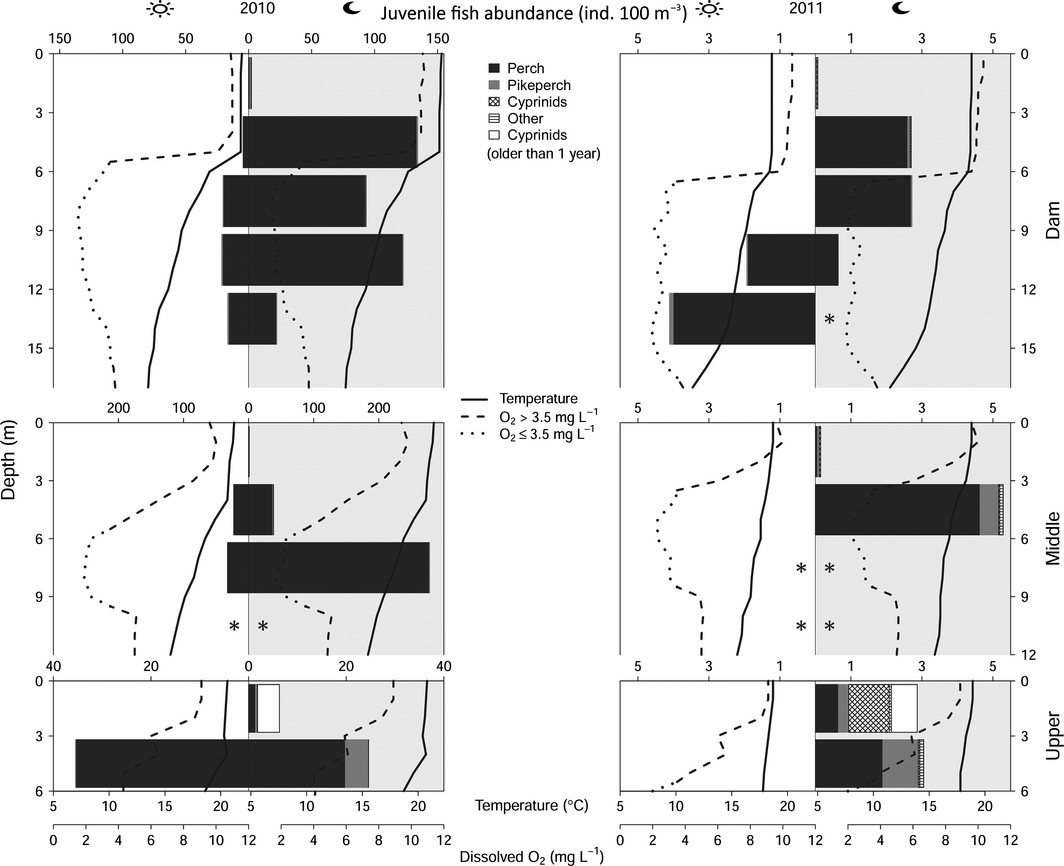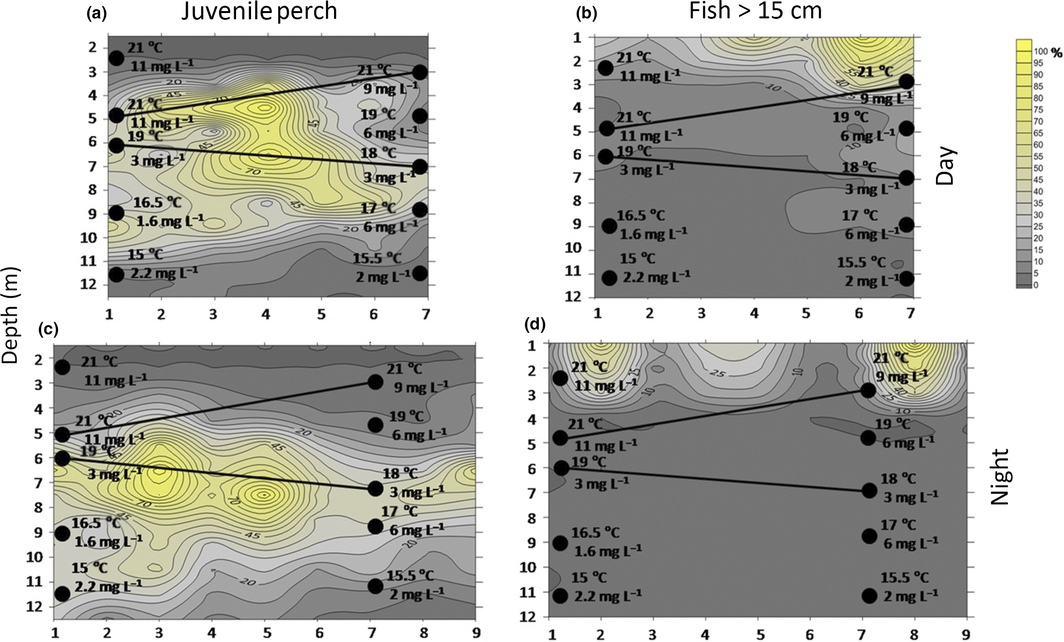1) Juvenile perch (Perca fluviatilis) often inhabit deep zones of lakes or reservoirs (metalimnion to hypolimnion). Using fry trawling and hydroacoustic measurements, we studied perch distribution to determine if juveniles are using deep hypoxic waters (oxygen concentration ≤3.5 mg L−1) as a refuge from predation.
2) We found a heterogeneous depth distribution of perch, with the highest abundance of juveniles in the hypoxic pelagic zones. Distributions were better correlated with oxygen concentration than with depth or temperature.
3) Densities of Daphnia spp. were high in the deep hypoxic zones, likely related to avoidance of predation from zooplanktivorous cyprinid fish. Furthermore, Daphnia was found to be the dominant food source for juvenile perch in hypoxic zones and gut fullness was highest in areas with maximum hypoxia. Contrary to earlier studies suggesting a dietary advantage of fish inhabiting cooler hypoxic zones, our study, considering physiological benefits and limitations of juvenile perch digestion, found no support for temperature caused substantial changes in gastric evacuation rates.
4) Our finding that high juvenile perch abundance was associated with low oxygen concentration suggests that juvenile perch are mainly using deep hypoxic waters as a refuge from large predators. This behaviour is reinforced by the presence of zooplankton prey in this zone.
Keywords: hypoxia; Perca fluviatilis; perch; predator avoidance; zooplankton


